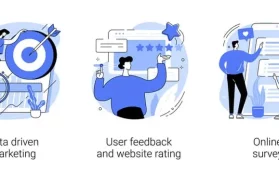
Whether you’re the customer or on the business side of things on an eCommerce website, you’re going to want your site to be as easy to navigate as possible. This only makes it easier for everyone to find exactly what they’re looking for much more quickly.
Additionally, easy navigation makes far more likely that someone will make a decision about whether shopping on that site is something they want to continue doing. Hopefully you’ll always have positive experiences on every website that you visit, but this simply can’t be the case if not everyone is using the same quality tools to facilitate good interactions online.
One of the best ways to facilitate these positive experiences is by having a faceted search tool embedded into the website’s system. Often, a faceted search tool will take the place of a search bar in an eCommerce site’s navigation systems. But what does a faceted search system do? How do you use it if you’ve never seen one before? And what are some of the benefits to having one?
What Does a Faceted Search Tool System Do?
Put simply, a good faceted search tool allows customers to use a number of filters on an online store’s catalog of items. This allows the site visitors to narrow down the list of products that they’re seeing at one time on their screen, so customers are far more likely to only see the kinds of items that they’re actually interested in shopping for.
This is different than just using filtered searches, however, because faceted search tools actually allow customers to use more than just one filter on a given website. This allows customers to narrow down an eCommerce site’s catalog on their search results pages far more than they would normally be able to do.
How Do You Use a Faceted Search Tool?
From a customer’s perspective, using a faceted search tool should be relatively simple. That’s the case whether you’re on the computer or on a mobile device.
In most cases, customers should be able to scroll through the different filter options that an online company provides and select one or more choices. Whether you’ll be able to select one option per filter type or more is generally going to be up to the web developer for the company’s website.
Is that confusing? It’ll likely make more sense with an example. Let’s pretend we’re shopping on an eCommerce site that offers a wide variety of clothing options to site visitors and customers. As a customer, you’re looking for a new pair of shorts.
Depending on the complexity that the company has given the faceted search tool, you’ll be able to filter out items in the company’s entire catalog. So if there isn’t an option that pops up in the first filter for shorts, there may be an option for just bottoms.
Bottoms can include a number of different items, including pants, jeans, shorts, and skirts. So you’ll probably have to filter out a few more results from your search results if you only want to look at shorts.
In the case that you aren’t sure where all of the shorts are going to be, or it you just want to be sure that denim shorts are going to still be an option while you’re searching, you’d be able to select both jeans and shorts in the next filter.
And you’d be able to make further filter selections if this didn’t make your search results small enough for you to search through. Or, if the selection is already small enough, you could theoretically stop there.
However, some other filter options you might see in the faceted search tool could also include things like wash, color, length, and whether or not the shorts are distressed. This won’t necessarily be the same for every fashion website, but this is just an example of what using a faceted search tool might look like.
What are the Benefits to Having a Faceted Search Tool?
On the business side of things, a faceted search tool can actually be pretty beneficial as well. While you might want to expose your potential customers to as many different items as possible, with the hope that they might be tempted to add a few more items to their shopping carts, this could theoretically be a tad detrimental. This is especially the case for first time visitors.
Having too many options for your customers to look through at one time can actually be pretty overwhelming, causing site visitors to be confused or even frustrated at all of the items that they’ll need to sift through manually.
Depending on the number of items your website offers, that might mean they need to look through dozens of pages before they’re able to find exactly what they’re looking for. However, what is far more likely than the customer’s willingness to scroll through every listing, is that they will want to exit your website and shop somewhere else.
But with a faceted search tool, customers are more likely to find what they want, they’re more likely to find that item quickly, and they’re more likely to actually make a purchase from your website.
In the case that a first time visitor does eventually make a purchase, they’ll also be likely to come back to your website and shop again. And in that circumstance, customers might be willing to sift through more of your website’s catalog.





